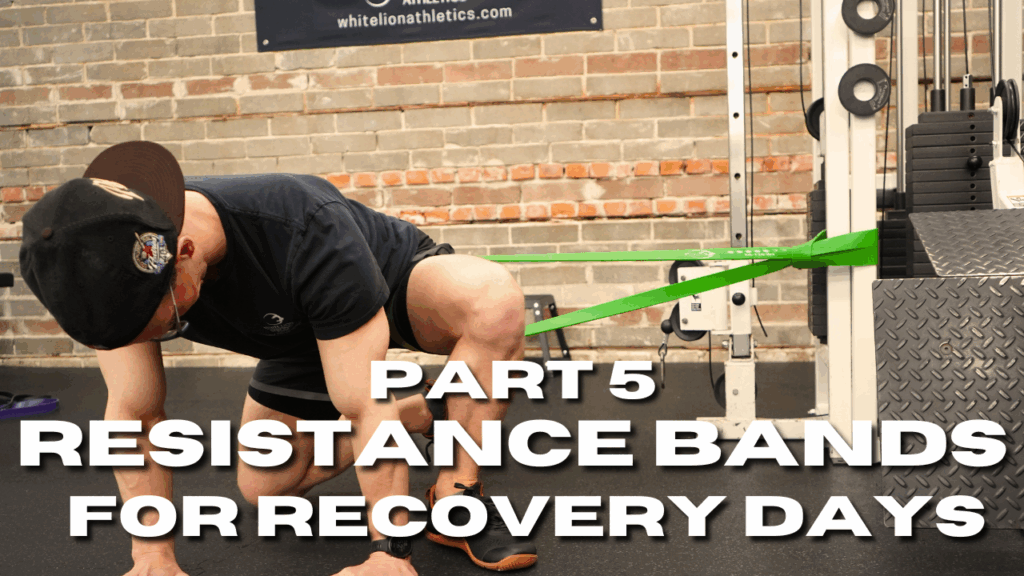
When it comes to building strength, improving performance, or training for a specific goal, it’s easy to overlook one of the most essential elements of success: recovery. And just as resistance bands have proven their value in warm-ups and training, they’re also an underrated tool for active recovery.
Whether you’re an athlete, a weekend warrior, or just someone looking to move and feel better, integrating resistance bands into your recovery routine can help you stay mobile, reduce soreness, and improve overall training longevity.
1. The Power of Active Recovery
Recovery doesn’t always mean complete rest. In fact, active recovery—low-intensity movement that promotes blood flow and reduces stiffness—can accelerate the body’s natural healing process.
Resistance bands are ideal for this purpose because they offer:
- Low-load resistance
- Controlled movement patterns
- Continuous tension without joint impact
Incorporating band-based mobility flows or light resistance work can enhance circulation and lymphatic drainage, flushing out metabolic waste products like lactic acid (Weerapong et al., 2005).
2. Mobility Work That Actually Works
Mobility is more than just stretching. It’s about improving joint function through a full, controlled range of motion. Bands can facilitate better mobility by:
- Providing traction to open up joint space
- Offering guided resistance to deepen and control range
- Allowing active engagement of stabilizing muscles
Example band mobility drills:
- Banded shoulder traction with gentle pulsing
- Banded hip flexor mobilizations
- Thoracic spine rotation with anchored bands
- Banded ankle dorsiflexion pulls for squatting mechanics
This type of work enhances tissue quality and reduces joint stiffness without overloading sore or tired muscles.
3. Tissue Work Without a Massage Gun
You don’t need expensive recovery tools to get results. Bands can be used to self-administer dynamic tension and light compression techniques—especially helpful when you’re sore or stiff.
Try:
- Wrapping a light loop band around quads or hamstrings and doing slow bodyweight squats
- Band flossing techniques around knees, elbows, or ankles
- Anchoring a band and gently moving limbs through resistance to “re-hydrate” tissues and joints
These movements encourage fascial glide, hydration, and improved proprioception (Cheatham & Kolber, 2015).
4. Programming Recovery Band Work
To make the most of your recovery day:
- Keep intensity low. Use light bands and prioritize quality over quantity.
- Breathe deeply. Use the work to reset your nervous system.
- Go slow. Focus on mindful movement and control, not speed.
- Time it right. Use band recovery sessions after a hard training day, during deload weeks, or while traveling.
A simple 20–30 minute session can leave you feeling looser, re-energized, and more aligned.
5. Perfect for Travel and Home Recovery
Since resistance bands are compact and portable, they’re the ideal travel companion for athletes and fitness enthusiasts. You can:
- Use them in hotel rooms
- Take them on flights to offset tight hips and low back stiffness
- Keep one in your gym bag or work desk for quick tune-ups
Bands help you maintain recovery habits anywhere, anytime—with minimal equipment or space.
Final Thoughts: Build a Recovery Ritual with Bands
Recovery doesn’t need to be passive or boring. Resistance bands provide a smart, affordable, and effective way to restore your body between training sessions. When used with intention, they improve mobility, enhance circulation, and support long-term performance and injury prevention.
So don’t just think of your bands as warm-up tools. Think of them as your everyday performance insurance—supporting you in motion and in rest.
References (APA Style):
Cheatham, S. W., & Kolber, M. J. (2015). The effects of self-myofascial release using a foam roll or roller massager on joint range of motion, muscle recovery, and performance: A systematic review. International Journal of Sports Physical Therapy, 10(6), 827–838.
Weerapong, P., Hume, P. A., & Kolt, G. S. (2005). The mechanisms of massage and effects on performance, muscle recovery and injury prevention. Sports Medicine, 35(3), 235–256.